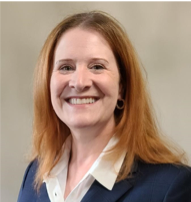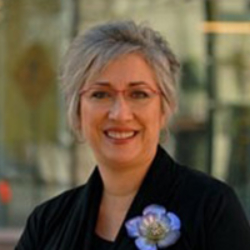Break through technology could make at-home diagnosis of diseases faster and more affordable.
A University of Minnesota Twin Cities research team has developed a new microfluidic chip for diagnosing diseases that uses a minimal number of components and can be powered wirelessly by a smartphone. The innovation opens the door for faster and more affordable at-home medical testing.
Nature Communications, a peer-reviewed, open-access scientific journal published by Nature Research, has published the study. Researchers are also striving to make the technology commercially viable.
Microfluidics is the study and manipulation of liquids at a microscopic level. Developing “lab-on-a-chip” technology, or the capacity to make devices that can detect diseases from a very little biological sample, such as blood or urine, is one of the most prominent applications in the area.
Scientists already have portable devices for diagnosing some conditions — rapid COVID-19 antigen tests, for one. However, a big roadblock to engineering more sophisticated diagnostic chips that could, for example, identify the specific strain of COVID-19 or measure biomarkers like glucose or cholesterol, is the fact that they need so many moving parts.
Chips like these would require materials to seal the liquid inside, pumps and tubing to manipulate the liquid, and wires to activate those pumps — all materials that are difficult to scale down to the micro level. Researchers at the University of Minnesota Twin Cities were able to create a microfluidic device that functions without all of those bulky components.
Researchers have been extremely successful when it comes to electronic device scaling, but the ability to handle liquid samples has not kept up. It’s not an exaggeration that a state-of-the-art, microfluidic lab-on-a-chip system is very labor intensive to put together. Our thought was, can we just get rid of the cover material, wires, and pumps altogether and make it simple?
Sang-Hyun Oh, Study Senior Author and Professor, Department of Electrical & Computer Engineering, University of Minnesota Twin Cities
Many lab-on-a-chip techniques identify virus pathogens or bacteria inside a sample by moving liquid droplets over a microchip. The method developed by the University of Minnesota researchers was inspired by a unique real-world occurrence that wine drinkers will be aware of: the “legs,” or lengthy droplets that form within a wine bottle owing to surface tension induced by alcohol evaporation.
Using a technique pioneered by Oh’s lab in the early 2010s, the researchers placed tiny electrodes very close together on a 2 cm by 2 cm chip, which generate strong electric fields that pull droplets across the chip and create a similar “leg” of liquid to detect the molecules within.
Because the electrodes are placed so closely together (with only 10 nanometers of space between), the resulting electric field is so strong that the chip only needs less than a volt of electricity to function. This incredibly low voltage required allowed the researchers to activate the diagnostic chip using near-field communication signals from a smartphone, the same technology used for contactless payment in stores.
This is the first time researchers have been able to use a smartphone to wirelessly activate narrow channels without microfluidic structures, paving the way for cheaper, more accessible at-home diagnostic device.
This is a very exciting, new concept during this pandemic, I think everyone has realized the importance of at-home, rapid, point-of-care diagnostics. And there are technologies available, but we need faster and more sensitive techniques. With scaling and high-density manufacturing, we can bring these sophisticated technologies to at-home diagnostics at a more affordable cost.
Christopher Ertsgaard, PhD, Study Lead Author, Department of Electrical & Computer Engineering, University of Minnesota. Ertsgaard is a recent CSE alumni (ECE PhD ‘20)
Oh’s lab is working with Minnesota startup company GRIP Molecular Technologies, which manufactures at-home diagnostic devices, to commercialize the microchip platform. The chip is designed to have broad applications for detecting viruses, pathogens, bacteria, and other biomarkers in liquid samples.
To be commercially successful, in-home diagnostics must be low-cost and easy-to-use. Low voltage fluid movement, such as what Professor Oh’s team has achieved, enables us to meet both of those requirements. GRIP has had the good fortune to collaborate with the University of Minnesota on the development of our technology platform. Linking basic and translational research is crucial to developing a pipeline of innovative, transformational products.
Bruce Batten, Founder and President, GRIP Molecular Technologies
In addition to Oh and Ertsgaard, the research team included University of Minnesota Department of Electrical and Computer Engineering alumni Daniel Klemme (Ph.D. ’19) and Daehan Yoo (Ph.D. ’16) and Ph.D. student Peter Christenson.
This research was supported by the National Science Foundation (NSF). Oh received support from the Sanford P. Bordeau Endowed Chair at the University of Minnesota and the McKnight University Professorship. Device fabrication was performed in the Minnesota Nano Center at the University of Minnesota, which is supported by NSF through the National Nanotechnology Coordinated Infrastructure (NNCI).
Journal Reference:
Ertsgaard, C. T., et al. (2022) Open-channel microfluidics via resonant wireless power transfer. Nature Communications. doi.org/10.1038/s41467-022-29405-2.










